
Artist-in-Residence Program

Artist-in-residence program provides opportunities for artists in the field of contemporary art to cultivate their artistic creativity and vision since 1994. Located around an hour from Tokyo, a residency at ARCUS Studio allows participants in the program to come into contact with the contemporary art scene in Japan as well as devote themselves to their creative endeavors in a calm environment while interacting with the local community. Through the support the program offers from its dedicated team of coordinators and regular tutorials with a curator, artists are able to search for and explore approaches in their practices and undertake new challenges in their artistic expression.
The program particularly emphasizes research-based practices and presents the initial results of these processes at open studios. It welcomes ideas for artworks and projects that develop out of encounters with people, the land, and culture, and aspire to form critical discourses that are open and international.
- Duration
- Approximately 90 days
- Program Provisions
- A private studio, accommodation, transportation, production fee, living expense, and staff support. (567,000 JPY is provided as a living expense and production fee in 2023. The allowance is subject to change.)
- Open Call
- January through March (TBD)
- More Info
- Past Residents
2024 Resident Artist
ARCUS Project’s Artist-in-Residence Program received applications from 512 applicants from abroad (62 countries and regions) and 22 artists from Japan. Following a careful screening process, Eva Seiler, Hyphen― and Tanji Rie have been selected as the 2024 residents. The artists will participate in a residency at ARCUS Studio in Moriya, Ibaraki, for 90 days from August 30 to November 27, 2024.
As the judges for this year’s applications, we welcomed Goto Oko, a curator at Contemporary Art Center, Art Tower Mito and Jihye Yun, a curator at The National Art Center, Tokyo who made the selection through a process of discussion with the ARCUS Project Administration Committee.
Overview of the 2024 Selection
An overview of the applications shows that a relatively high proportion were inspired by cultural anthropological perspectives and discussions, especially those from North America and Europe. During the selection process, we were particularly impressed by highly ambitious attempts to bring light on the modern societies which have spread throughout the world and the depth of their history, such as those which question the relationship between Japan and Europe through non-native plant-life, those dealing with human perceptions of animals, plants and landscapes as constructed through animation and trade, and those which made comparisons of cultures through the keywords of labor and earthquakes. The selection was therefore difficult, yet eventually, we chose from outside of Japan an artist who strives to discover the potential for transformation of modern society through metamorphosing insects, and a collective which unravels their own country’s history through the relationship of prominent artists from their country and Japan. And from the domestic applications, an artist who creates works based on the fact of a park within Ibaraki Prefecture having been the site of military exercises was selected. These three groups will be spending 90 days in residency from late August through until late November.
Ozawa Keisuke (Director)
2024 Resident Artist
Eva Seiler
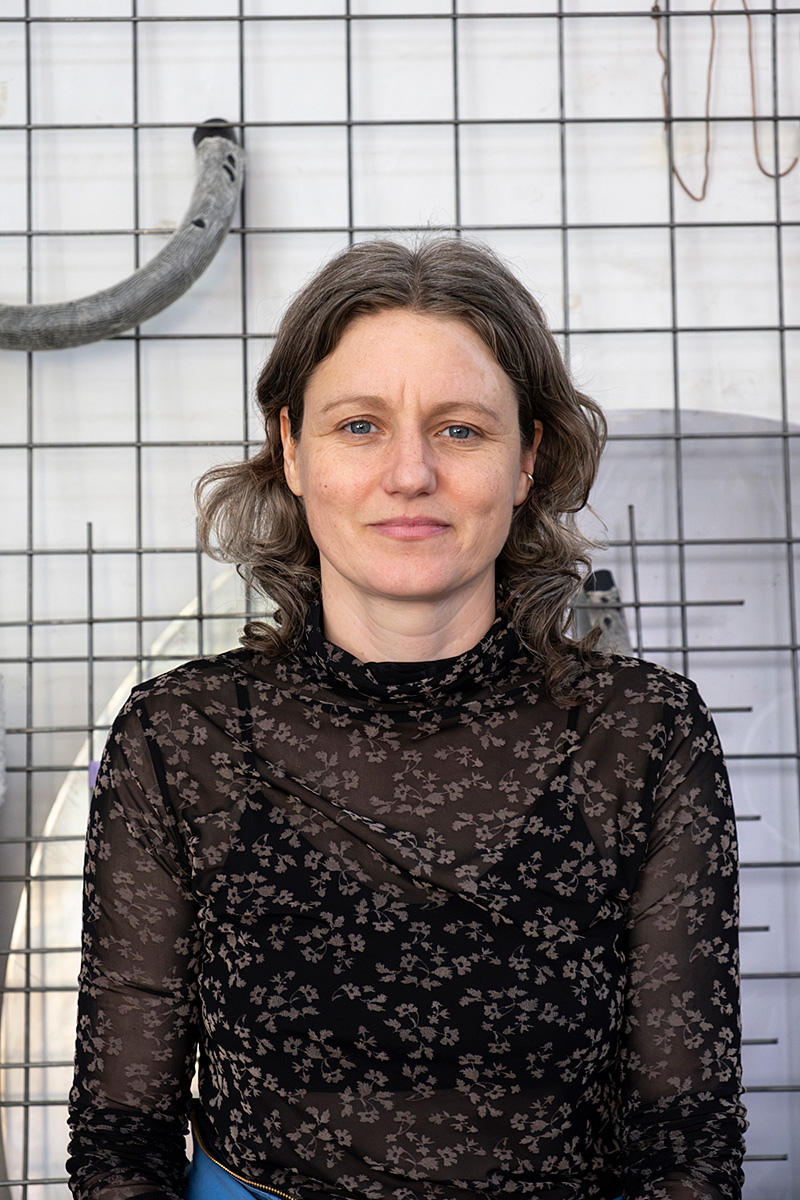
Born in 1979 in Germany, and based in Vienna, Austria. Through objects created from organic materials and manufactured goods, Seiler’s works interrogate the relationship between humans and animals. They recontextualize the socio-culturally constructed relationship between the two, while actually being used on both. Based on literature and field research, her works are not material documents which trace theoretical or academic discourses, but rather, are representations of the organic and active relationship between humans and the actors they engage with. Seiler’s strong figurative technique and understanding of space gained through studying sculpture, combined with her curiosity of new relationships of humans through research, come together in her creative work to illuminate the potential of the post-modern age. Past exhibitions and activities include Tuesdays@Secession, with Johanna Tinzl (Secession, Vienna, 2022), BMKOES scholarship (2022), and collection for the Wien Museum.
https://www.evaseiler.com
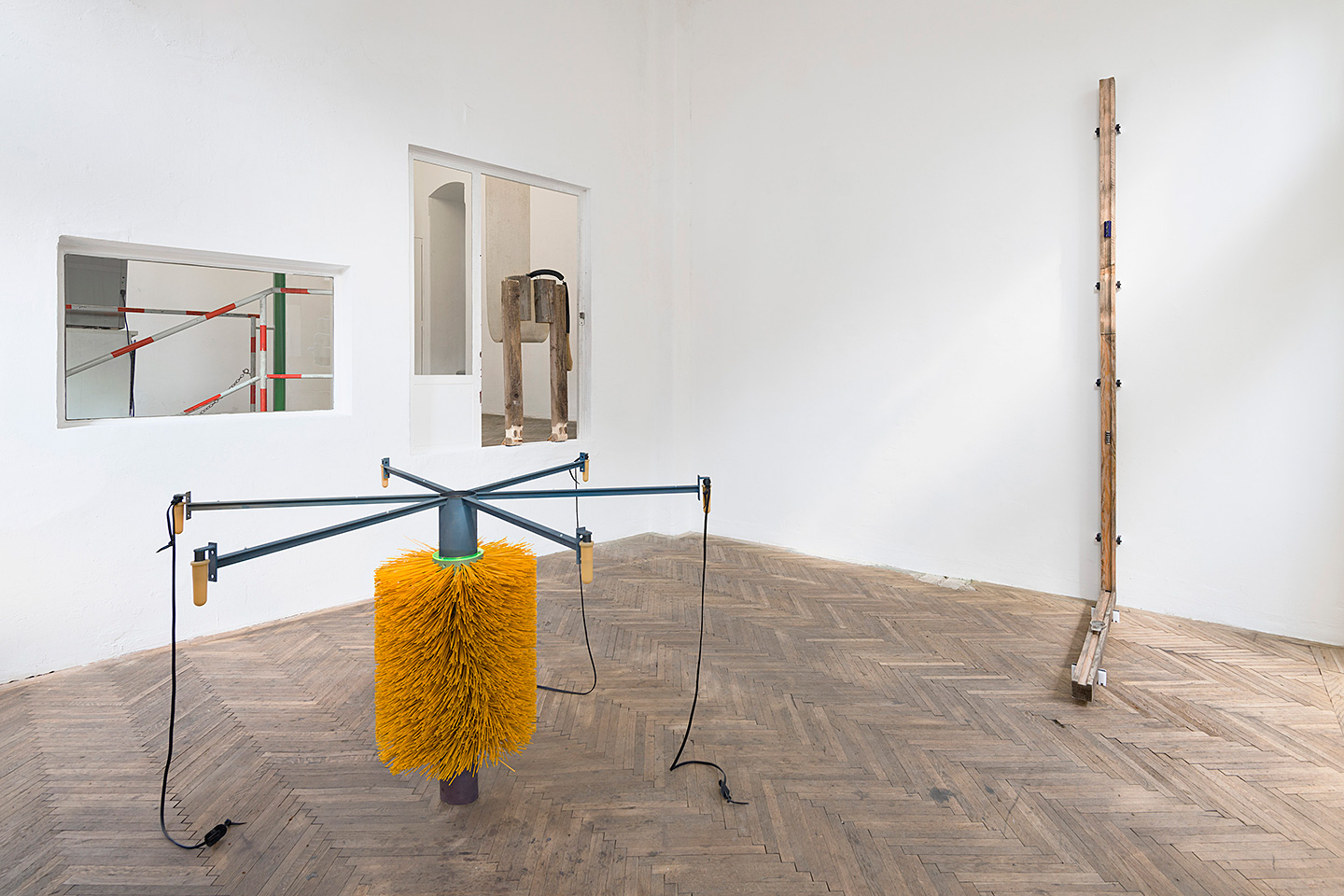
Yvonne
Installation, 2020
Photo: Georg Petermichl
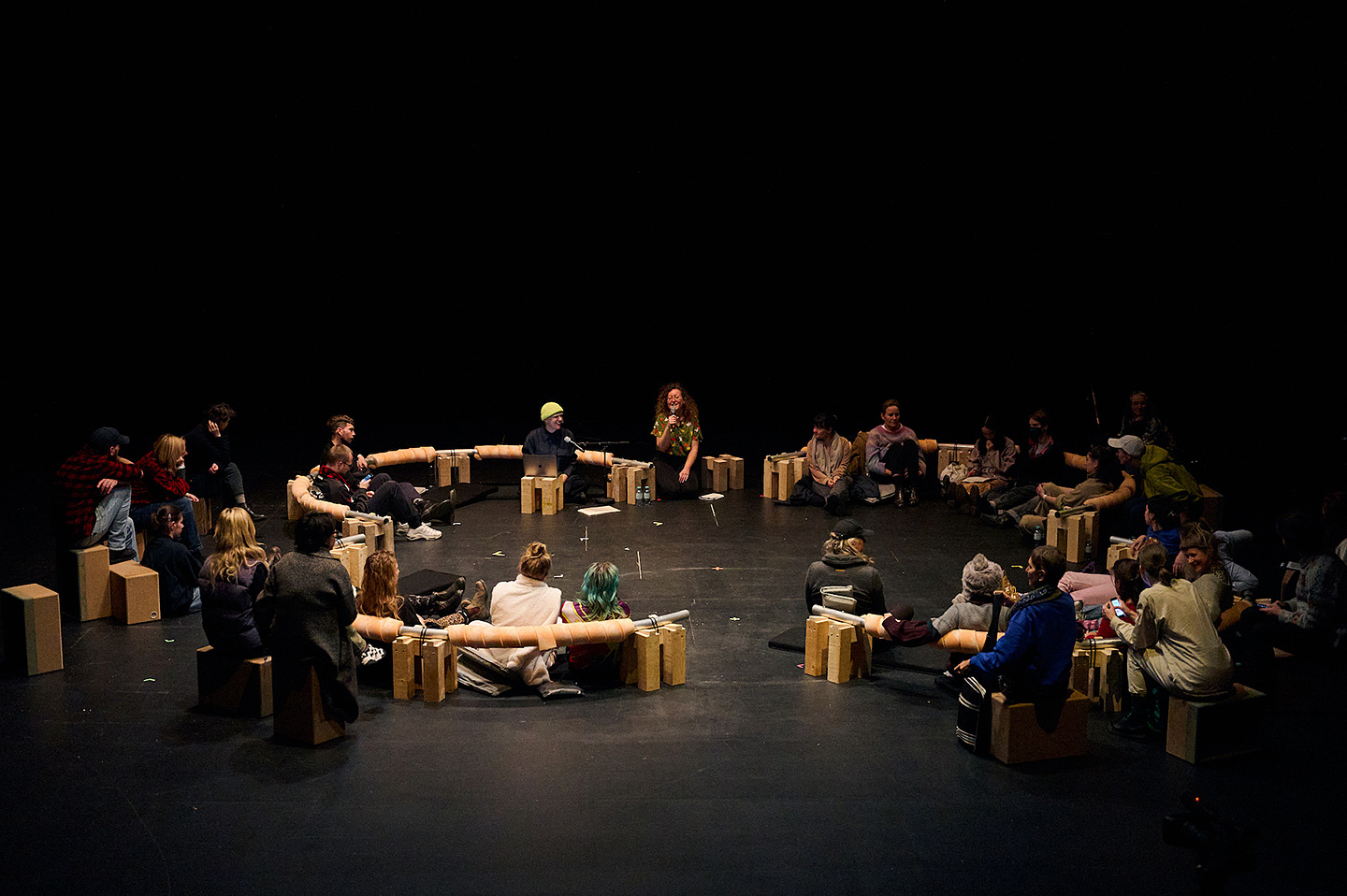
Together the Parts (Seat Object)
Installation, 2022
Photo: Markus Gradwohl
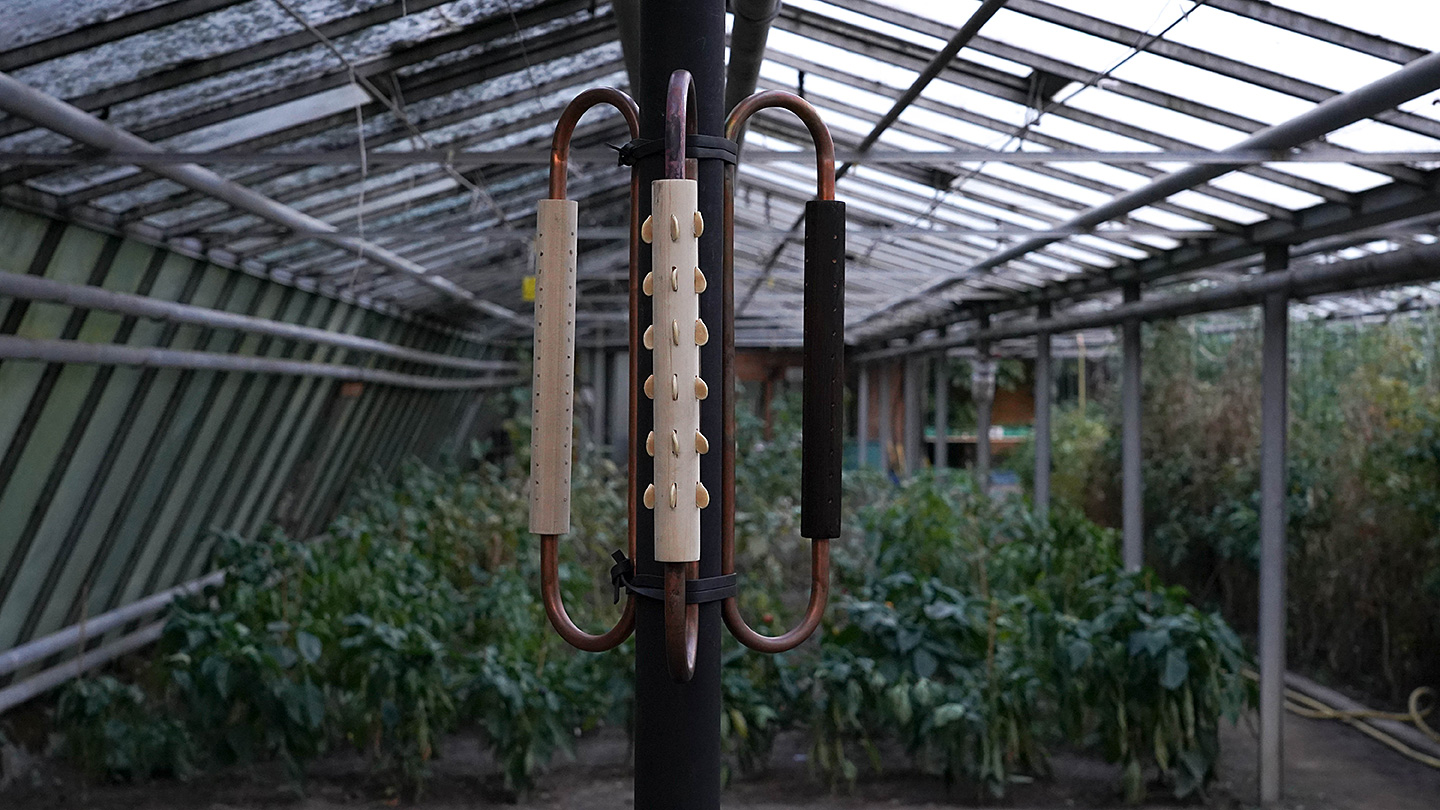
The Keeper of the Seeds
Copper, rubber, steel, wood, seeds, 2021
Photo: Viktoria Bayer
Reason for Selection
With inspiration from insects in traditional Japanese culture such as their depiction in ukiyo-e prints, urushi lacquerware and metalwork, Seiler’s planned works will represent modern society through the relationship between silkworms and humans. Silkworms, the larvae of moths, cannot live without human beings; and it is through silkworms that humans can obtain silk. Unravelling this mutual interdependence, she attempts a rereading of relationships such as servitude and labor, care and exploitation. Paying attention also to the capacity of the silkworm to change its own form, she sees therein the potential to break through the fixed relationship between humans and insects, and imagines a future which could be created if both could be interrelated as active subjects. During her residency with the ARCUS Project, Seiler will visit sites of Yuki tsumugi (high-grade silk textile fashioned by hand in a folk art style) in Ibaraki Prefecture, the Tomioka Silk Mill in Gunma Prefecture, and silkworm farms; conducting field work on the site of silk production and also observing the silkworms’ ecology. At the same time, she will also research the equipment and architecture used in silk farming. Seiler was selected for the high evaluation of how she connects abstract academic theories and discourse with concrete events actually taking place, her ambition to design a future in which humans and insects mutually assist one another, as well as her figurative ability to express this in her work.
2024 Resident Artist
Hyphen―
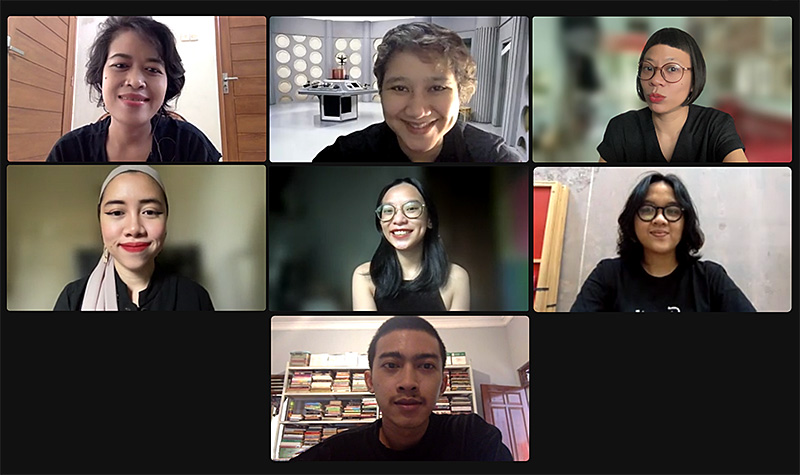
A seven-member research group co-initiated in 2011, working from Yogyakarta, Indonesia. Their research-focused artistic activities take various forms such as publishing, exhibition-making, archiving, open-ended conversations, karaoke, barbecue nights and feasts. Selecting a particular person and unravelling Indonesia’s history and identity through the achievements of that individual, the group strives to capture the complexities of the nation state. Among their previous works is the film Visualization of the National History: From, by and for whom?, which features dioramas made under the supervision of the eminent sculptor Edhi Sunarso to take another look at Indonesia’s national history. This depicts the contradictions in the construction of a unified identity of the Indonesian nation due to colonial influences, geographical conditions as a group of islands, state violence and vengeance, as well as its diverse languages. Past exhibitions and activities include As if there is no sun (curation) in the 58th Carnegie International (Pittsburgh, USA, 2022-2023), Jakarta International Literature Festival (As Danarto dkk, Taman Ismail Marzuki, Indonesia, 2022), and Danarto dkk (participation in the Buzdokuz Magazine’s project in the 17th Istanbul Biennial, Turkey, 2022).
https://hyphen.web.id
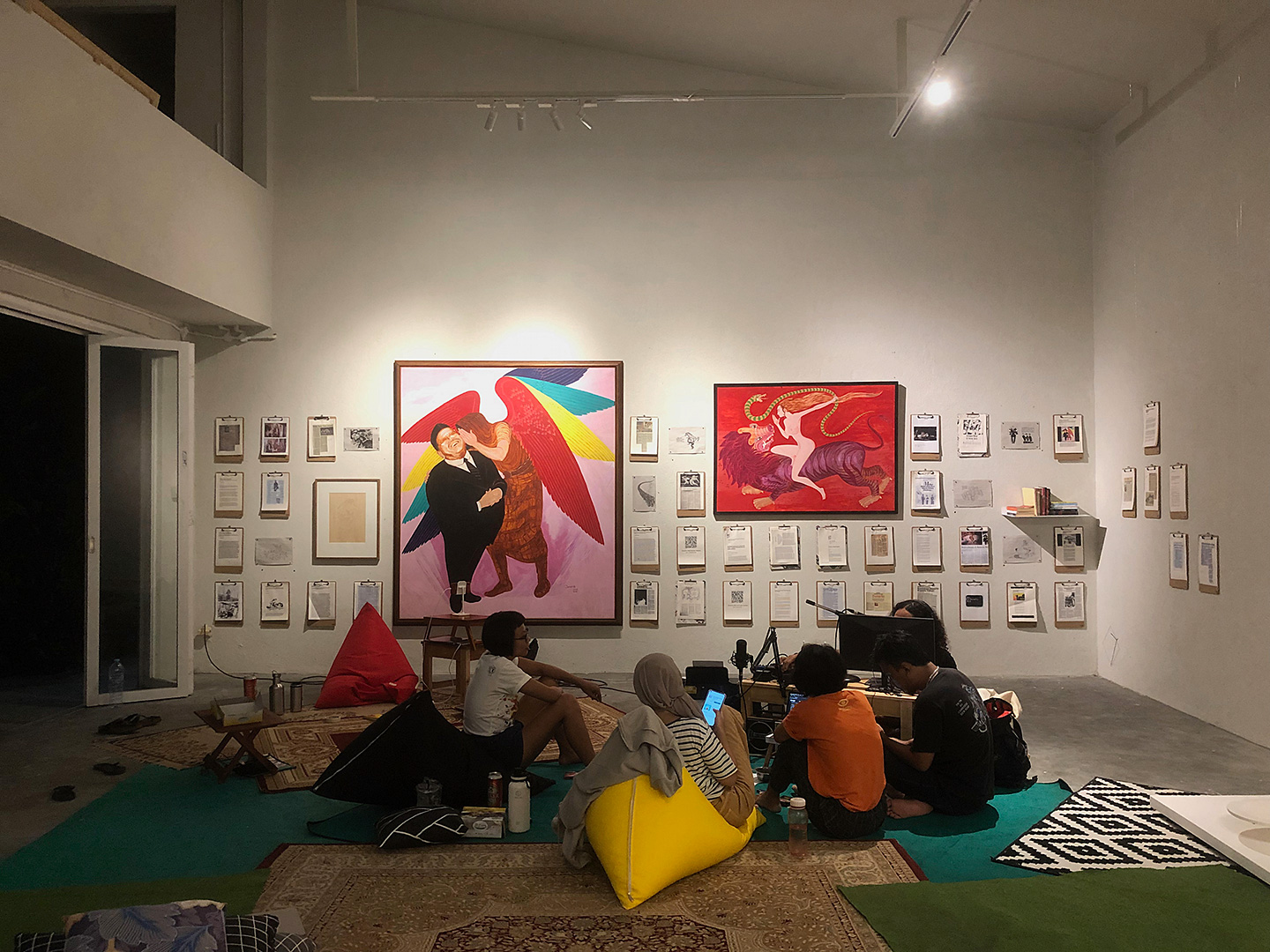
Taman Bacaan Danarto at Jendela Institute (Yogyakarta)
Project, 2022
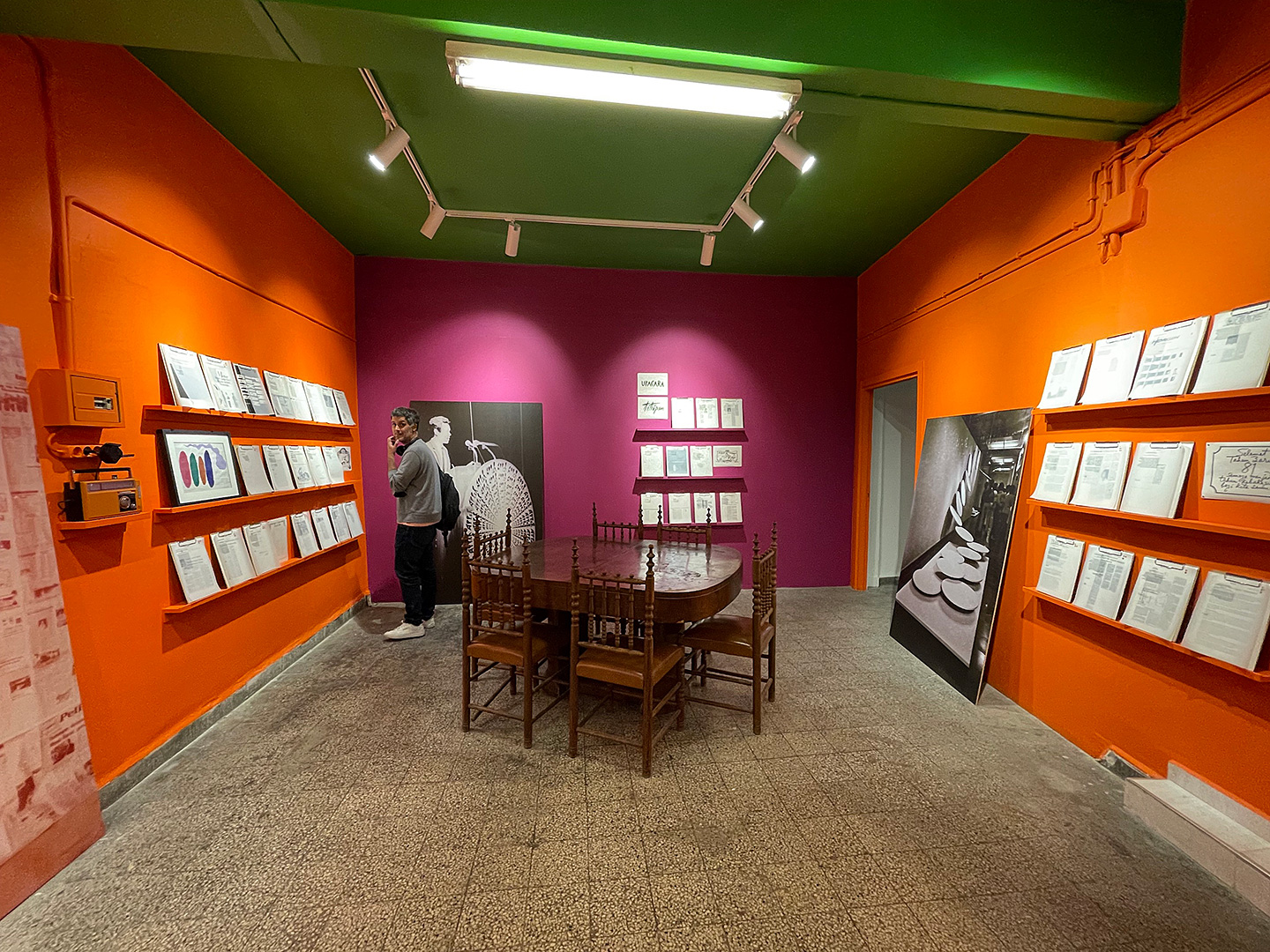
Taman Bacaan Danarto at Jendela Institute at 17th Istanbul Biennial in Barin Han (Istanbul)
Project, 2022
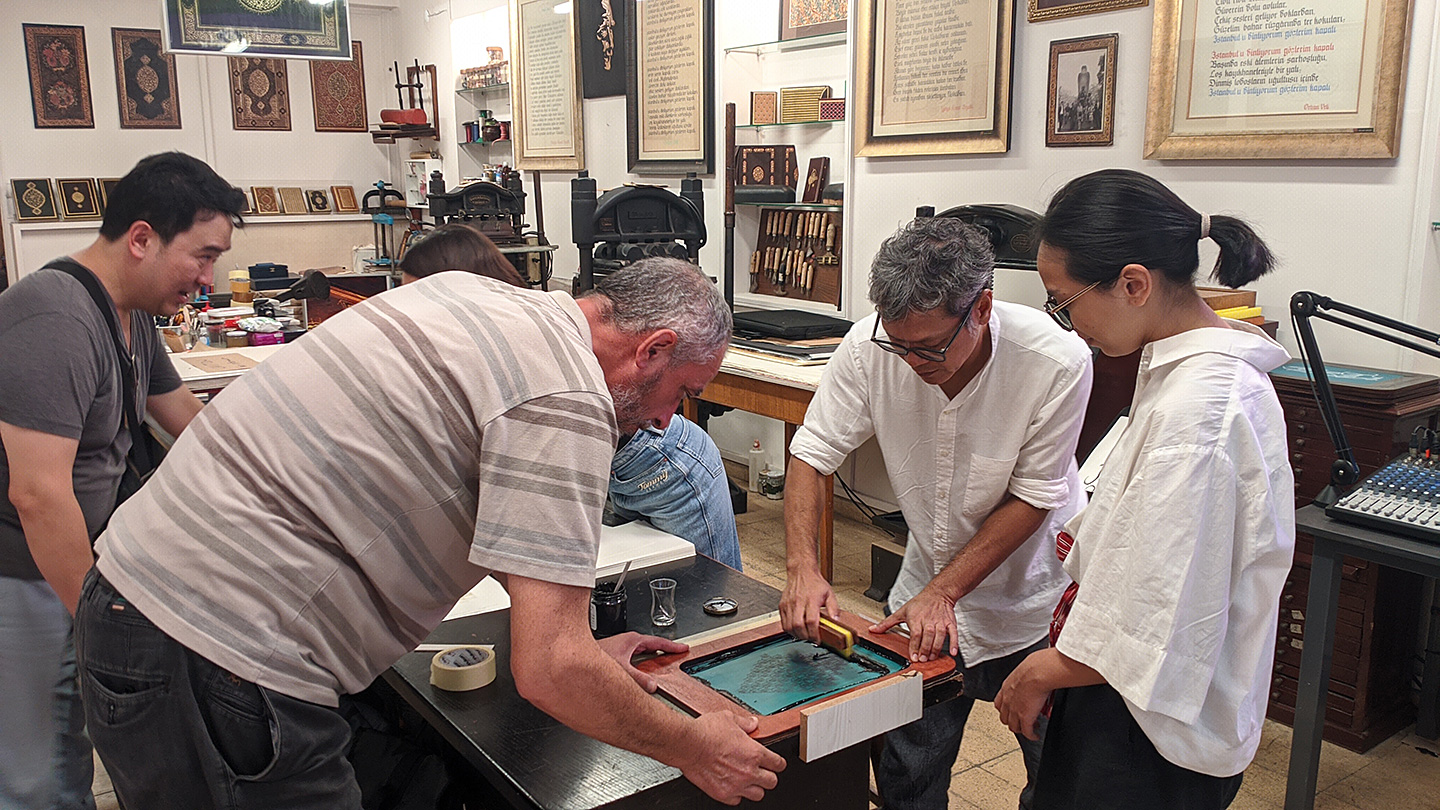
Loka-loka: Habis tak sudah (Over yet undone)
Workshop, 2022
Reason for Selection
Their ARCUS Project residency work will shed light on the Indonesian artist and playwright Danarto (1941-2018). Taking the stage art created by Danarto for the Indonesian Pavilion at the 1970 Japan World Expo, as a point of departure, their project will trace two works related to Japan. One is Danarto’s only novel Asmaraloka, which was written between 1990-1991 in Kyoto. The second is Bumi di Tangan Anak-Anak (Earth in the Hands of Children), his script awarded best work at the Asia Pacific Festival of Children’s Theatre held in Toyama Prefecture in 2004. The task of unravelling and reconnecting Indonesian history and Danarto’s experiences in Japan will be opened to other artists and collectives through an open studio, and developed further. Highly evaluating their project’s rethinking of the nation state through a transnational perspective without aiming for completion, Hyphen― was selected for this residency.
2024 Resident Artist
Tanji Rie
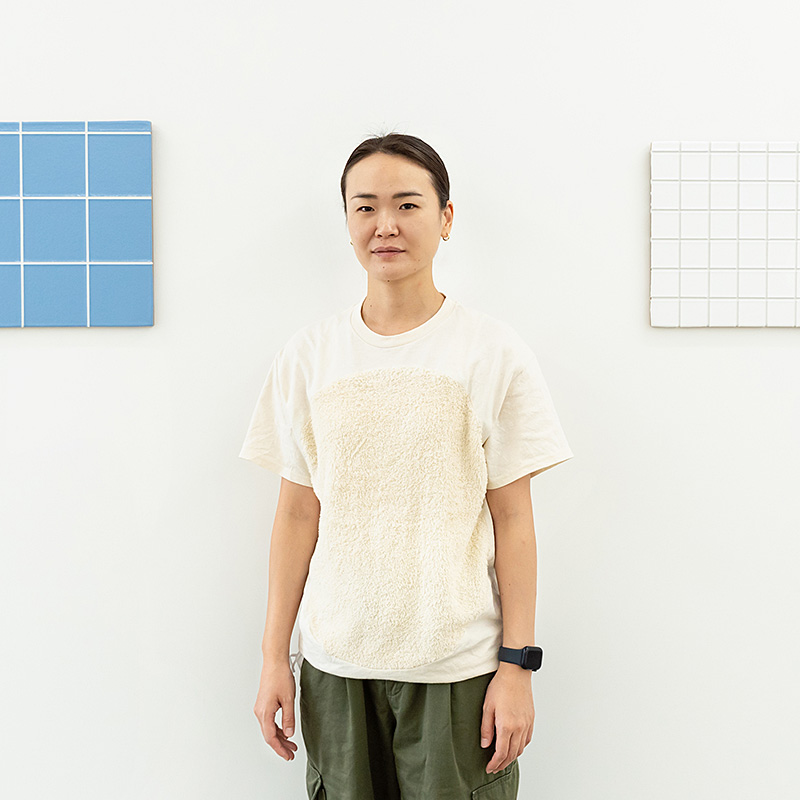
Born in Fukushima Prefecture in 1983, and living in Okinawa Prefecture. Drawing attention to the similar circumstances in social structure of Fukushima where she was born and raised, and Okinawa where she now lives, Tanji creates temporary structures to investigate the relationship between humans and things, as well as humans and the environment. Both Fukushima and Okinawa share a history of having their course determined not through the will of the citizens but through political decisions of the state. When power is asserted, sudden shifts in values can take place, rendering what was once useful no longer relevant. Tanji is concerned with the structures deriving from such social dynamics, as well as the personal happenings which are overlooked in the shadows of those structures, creating works that shake people’s senses of things and of places. In Scenery in Memory (2023), she recreated the interior of her family home which was destroyed by natural disaster, through arranging similar items based on remnant photographs, then photographing this to create her artwork. How reminiscent is this of her now gone family home? Her work represents the geopolitics of Japan’s local communities, interrogating the perceptions of the audience. Past exhibitions and activities include REDRAW TRAGEDY (Künstlerforum Bonn, Germany, 2022), commission work for Hotel Anteroom Naha (2020).
https://rie-tanji.com
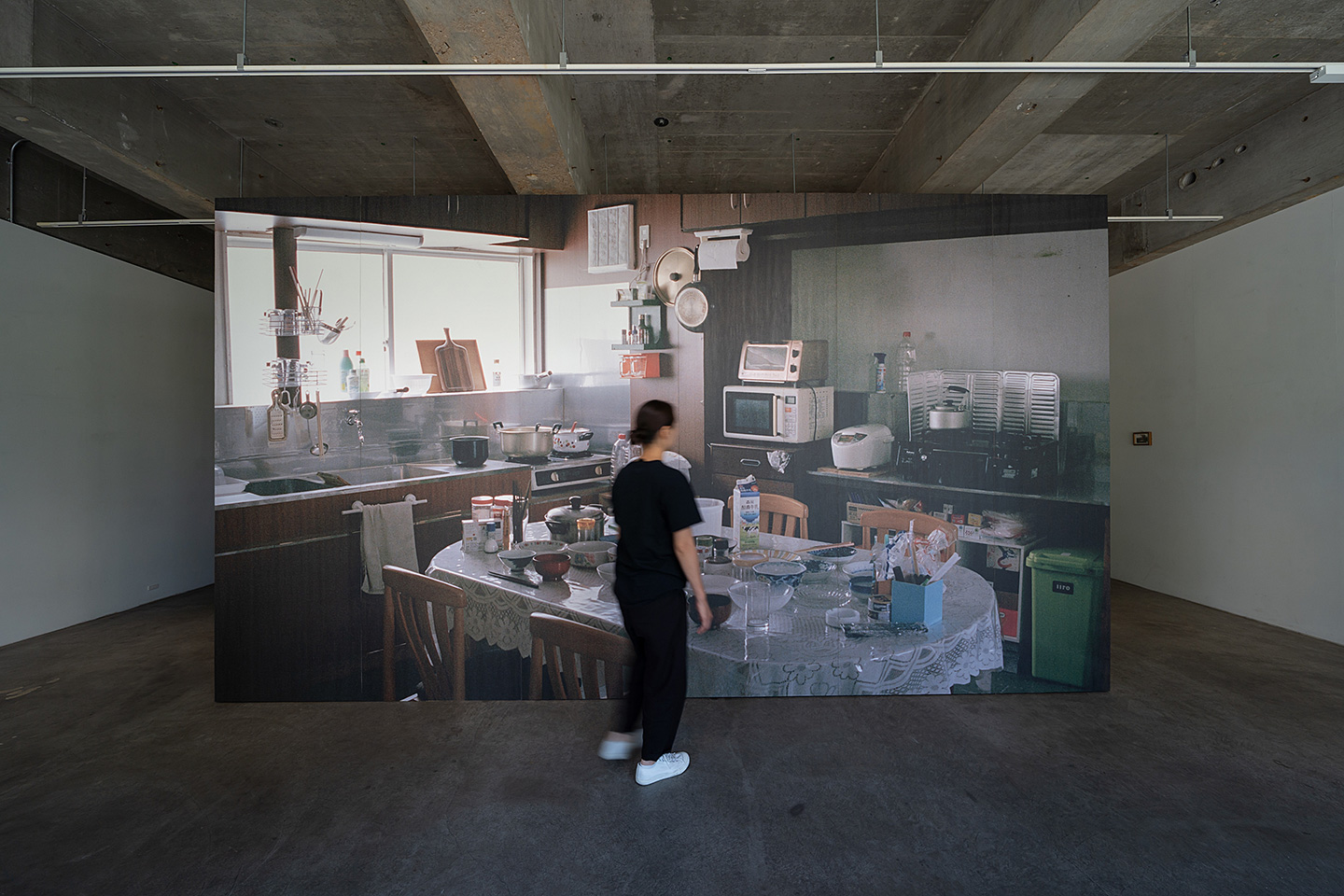
Scenery in Memory
Installation, 2023
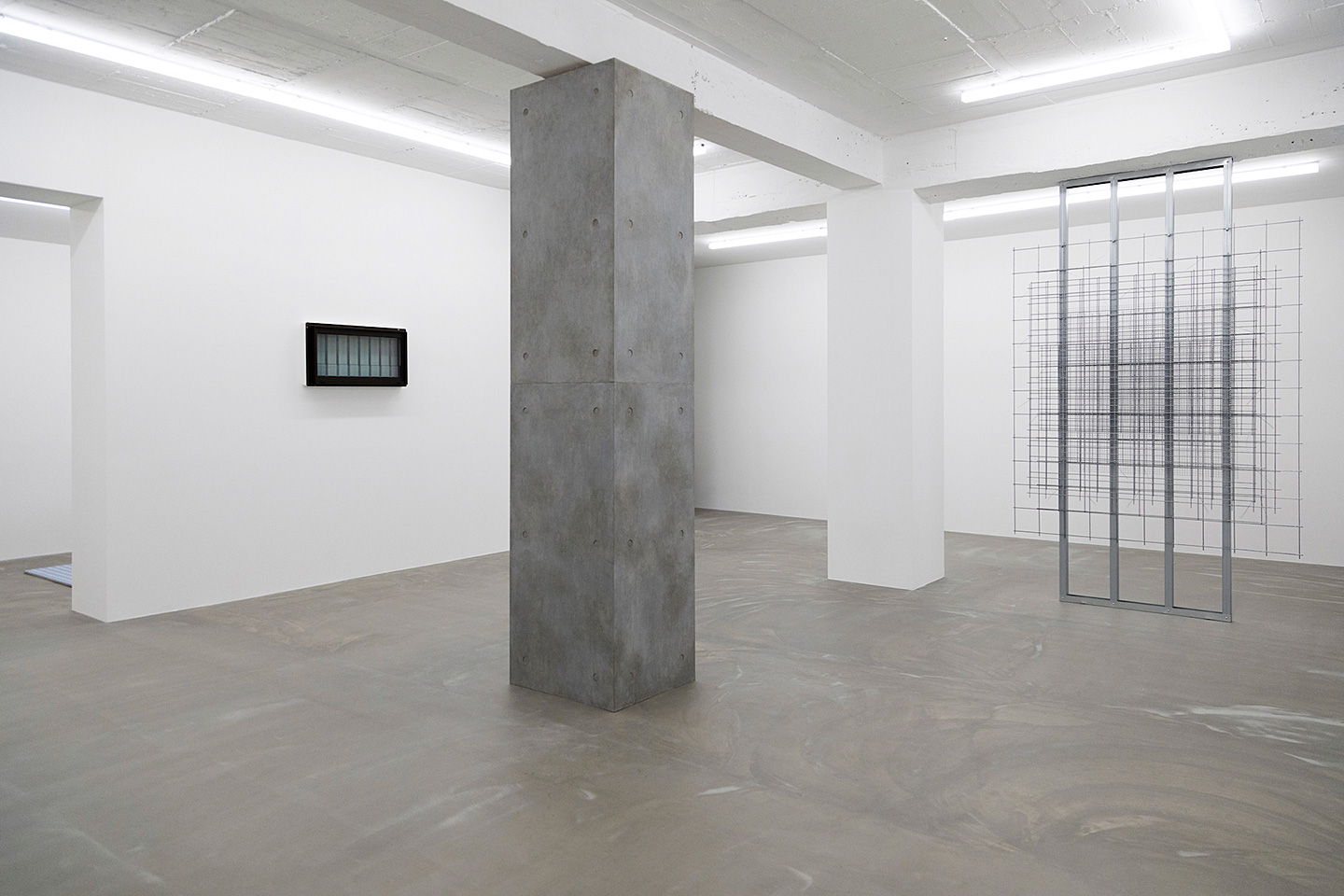
仮説|部分
Installation, 2022
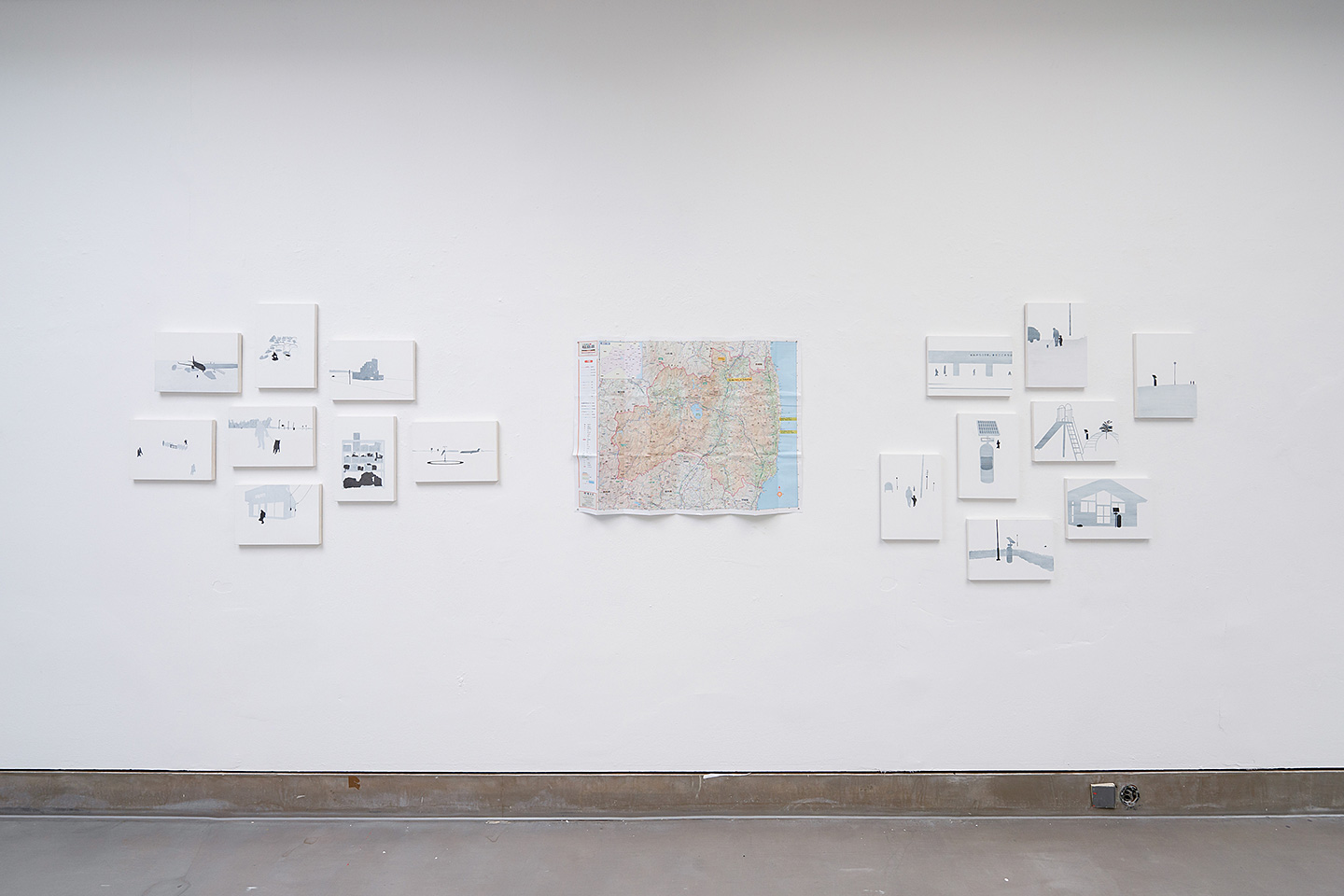
TOHOKU Landscape
Installation, 2022
Reason for Selection
Hitachi Seaside Park in Ibaraki Prefecture was once a military training base seized by the US military following World War II. Tanji’s project is based on that fact, and will explore visions of the future for Okinawa through overlaying the lands of Ibaraki and Okinawa. After the base was returned to Japan in 1973, a citizen’s movement led to its redevelopment as a flower park symbolizing peace, which opened to the public in 2007. On the other hand, it is rather challenging to imagine the future of Okinawa, due to the long stalled issue of relocation of the Futenma airbase. Tanji uses images of places which exist today as motifs to explore the overlapping elements of Ibaraki and Okinawa. The image tentatively constructed through numerous processes will certainly reflect the past of US military bases, the present in which they are gone, and the future in which that will also disappear. Tanji was selected in the hope that by probing the land of both Ibaraki and Okinawa, her work will simultaneously reveal the political agendas of Japan and the citizen’s will which stands at the other extreme of the spectrum.